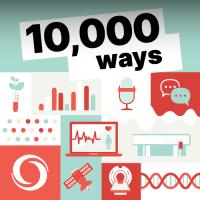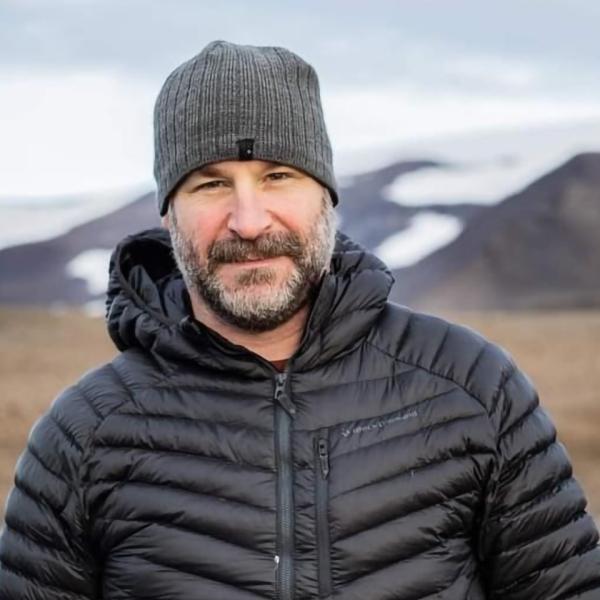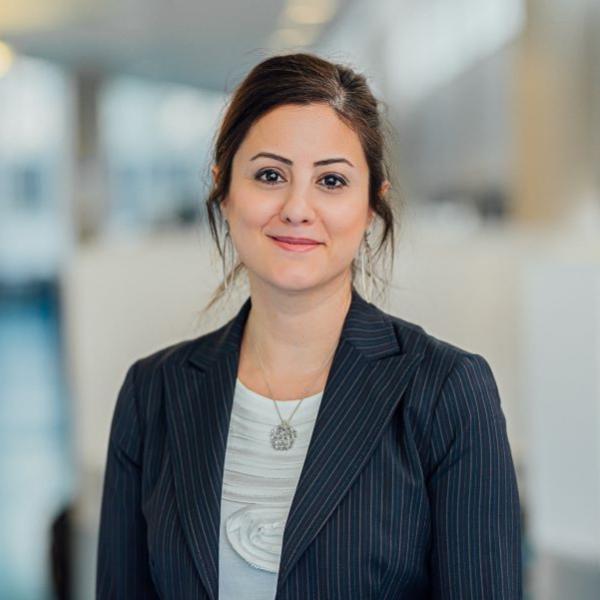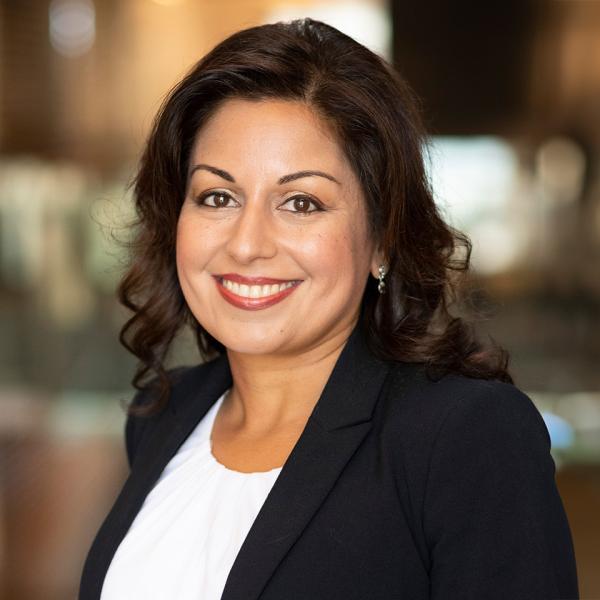Host:
This is a Canada Foundation for Innovation podcast.
(Music in)
Hello and welcome to 10,000 ways. This is a podcast about curious researchers, leading edge science and the joy of discovery.
Our podcast gets it’s name from Thomas Edison who said, “I have not failed. I’ve successfully found 10,000 ways that will not work.”
(Music out)
The Université de Moncton is an exclusively French-language university with three campuses: in Edmundston, Moncton and Shippagan, New Brunswick.
We had the chance to chat with researcher Céline Surette, who teaches there.
(Music in)
Céline Surette:
My name is Céline Surette, and I’m a professor in the Department of Chemistry and Biochemistry at the Université de Moncton.
The laboratory I work in is an analytical and environmental chemistry laboratory, where we specialize in trace element analysis: metals, radionuclides, anything that can be analyzed in its elemental state.
I’m a very interdisciplinary researcher who finds herself all over the place [LAUGHS] and not just in the lab.
Collaboration is at the heart of my scientific approach. It’s what ensures that we’re able to move from knowledge to action, that we answer questions that are of interest to the people we work with.
It’s mostly about health and environmental issues. That means working with communities to understand their needs, interviewing them to understand the health issues but also the social, cultural and economic issues that will affect these communities.
We coordinate our efforts to go out into the field, where we’ll take environmental samples, such as fish or sediment or water.
(Music out)
Host:
In 2012, Céline Surette received funding from the CFI to equip her laboratory to evaluate biomarkers of metal exposure and select bioindicators of the quality of aquatic ecosystems: the aim was to improve their health and the health of human beings.
(Music in)
Once the samples have been taken, this equipment really comes into its own.
Céline Surette:
Well, there’s the laboratory part, where we take the samples back to the lab and process them. We have two labs: one where we prepare the samples that come in from the field, and then we move on to our analysis lab, where we have the equipment that the CFI enabled us to acquire.
So, we have an ICPMS. That is an inductively coupled plasma mass spectrometry instrument. What it’s going to do is allow us to take our samples in either gas or liquid form and atomize them completely to return them to their elemental state. And then, once they’re in the plasma, which is very, very hot, these elements are brought into the mass spectrometer, where they’re separated according to an ion/mass ratio so we can analyze the elements. This also enables us to carry out isotopic analyses.
Host:
(Music out / new music in)
Isotopes are atoms with the same number of protons but a different number of neutrons.
This is why isotopes of the same element (such as hydrogen, oxygen, fluorine, helium) have identical chemical properties but different physical properties (such as stable or radioactive).
Isotopic analyses are therefore carried out to compare the isotopic abundance of elements and their variations, both natural and anthropogenic.
This makes it possible to understand their origins. In practical terms, these analyses are carried out as part of food fraud detection, anti-doping controls and to measure the age of archaeological remains or to determine the origin of oil when there is a suspicious spill, but also, as Céline Surette does, as part of ecological or hydrological studies.
Céline Surette:
This really enabled us to consolidate our analyses …
(Music out)
… and to really get the infrastructure we needed to develop this part of the business. I use the word “we” a lot because I’m not alone. Of course, I have my own research team with my students and research professionals.
But I also work with colleagues in the department, including Olivier Clarisse, who uses the instrument as well. We’re really two researchers who use this instrument on a regular basis in our research. And when other colleagues want analyses, we’re able to meet their needs. It allows us to have great infrastructure here in the region, in Moncton.
Host:
Among her many interesting projects, Céline Surette analyzed the impact of manganese in drinking water on children’s intellectual development.
Céline Surette:
This was a project I led with my colleague Maryse Bouchard, who was at the Université de Montréal and is now at INRS Centre Armand-Frappier with a research chair; she is an epidemiologist. She was in charge of the epidemiological aspect of the project, and those of us here were doing all the data collection, sample analysis and development of biomarkers for manganese in children.
(Music in)
What did we find? We know that manganese is an element that is found in varying concentrations in groundwater. It’s really a problem of well water, of groundwater. And in New Brunswick, 60% of the population uses groundwater, which is higher than the Canadian percentage of about 30%.
We know that there are certain regions in New Brunswick where the bedrock is very rich in manganese, and it’s possible to have high manganese concentrations. We wanted to understand this whole dynamic.
This enabled us to validate the biomarkers of exposure. We were able to see differences in the markers that were hair, which is the one that works best. But we also checked saliva and nails, which are two other biomarkers that can help us understand manganese exposure.
We can also see that manganese, even in relatively low concentrations, will have an impact on indicators such as IQ. We measured memory effects, for example. And so, we could see, even if it was very small, a difference in manganese levels. When we took all the data from Quebec and New Brunswick, we were able to propose to the Canadian government what thresholds should be set as limits. Since that study, we now have a maximum standard for manganese in Canada.
These studies have really helped us in terms of public policy and health protection, so we’ve managed to set a standard, which wasn’t the case before.
(Music out)
We had an aesthetic standard for manganese because it stains: laundry detergent, toilet bowls, things like that. [LAUGHS] People don’t like that, so we tend to treat for manganese aesthetically. But we were also able to indicate that it was important to treat for health reasons.
Host:
It can’t be easy to win a case with so many stakeholders involved in an issue, especially an environmental one.
Céline Surette:
Not every context has environmental issues that require us to study problems and find solutions.
That’s why relationships can present all kinds of challenges. One, there are people who just don’t want us to study certain issues, so it’s clear that there are issues that can be more political, that can generate income, employment, where different groups of people can see the work we’re doing as putting obstacles in their way, that “We’re against development.” I don’t think we’re against development, but we want to make sure it’s done in an equitable and viable way …
(Music in)
… for our ecosystems.
There are definitely times when the type of work I do will come up against a wall. It’s too controversial a subject; people are afraid we’ll find things that will limit a particular development.
Navigating between our role as scientists and our role as activists, because we are activists, too, is something that remains very difficult, and I’m not sure I’ve found the best way to go about it yet. We have to keep trying to find ways of navigating this complexity.
(Music out)
Host:
In the end, Céline Surette placed science ahead of activism.
But what is it that gives her such a passion for science and chemistry?
Céline Surette:
(Music in)
I’ve always been interested in science. As far back as I can remember, it’s always been something that fascinated me.
When I was in school, I knew I was going to go into science. But what kind of science? Well, that’s always a bit more difficult. At one point, when I was in grade 11 or 12, a professor who taught at the Université de Moncton came to give a presentation on chemistry to our class.
I couldn’t even tell you what part of his presentation grabbed me, but at the time, I knew I wanted to go into chemistry. So, I enrolled in chemistry. Then, at first, nuclear chemistry questions, the chemistry behind it and all the nuclear decay, all that, it’s really very fascinating, very interesting. But it was when I took a course in environmental chemistry in my second or third year that things really clicked.
(Music out)
From there, I had the opportunity to work in labs in research teams here at the Université de Moncton. I was able to discover what it meant to work in a lab.
I think it was when I was in my fourth year of high school, when I did my introductory research project. I did a project on environmental chemistry, where we were interested in metal concentrations in fish in an Indigenous community here in New Brunswick, on Indian Island — a Mi’kmaq community.
(Music in)
The first time I went out in the field, well, I’m not a fisherman [LAUGHS] – I’d never touched live fish! I was with a biologist from Fisheries and Oceans who accompanied us, and this whole initiation was really a moment that [LAUGHS] took me out of my comfort zone, that made me understand a little more what was going on in our ecosystems.
It seems that it’s really a combination of all these elements, as well as the passionate people who accompanied me throughout my studies, who helped to keep me hooked.
(Music out)
Host:
Was the future as clear as the spring water she would later analyze?
Céline Surette:
I don’t think we know when … In Acadia, we’re still a young population when it comes to university education. I’m lucky because I come from a family that believes a lot in education. My parents are both university educated, which isn’t the case for many people of my generation in Acadia.
But education tended to be for certain professions — being a doctor and becoming a lawyer or a teacher — all the training courses where you know what you’re going to have as a profession at the end of your training. You do a chemistry degree, you become a chemist, yes, but [LAUGHS] it’s much broader than that.
It opens up so many doors that it’s difficult, I think, for young people to really know what they’re going to become, and the question of “becoming a researcher” wasn’t part of the environment I grew up in. We didn’t talk about the “researcher’s job,” we talked about other types of jobs. That’s why I think it was through all these experiences in my undergraduate studies that I was able to discover that there was such a thing as just spending your life asking questions and finding ways to answer them. And that’s great to be able to do that [LAUGHS] because it certainly satisfies my need for curiosity. I’ve always been very curious, so being a researcher is something that suits me.
Host:
Having said that, there’s no question of putting Céline Surette in just one box, neither as a “chemist” nor as a “researcher” …
(Music in)
… nor as part of any other category!
Céline Surette:
I had the opportunity of having an “introduction to research” professor who immediately saw that it wasn’t just chemistry that interested me, that I had this more open, interdisciplinary perspective, and so he opened my eyes to environmental studies programs. And so, from a bachelor’s degree in chemistry, I went on to a master’s degree in environmental studies.
At the doctoral level, I was able to start integrating ecosystem approaches to health with Marc Lucotte and Donna Mergler. Marc Lucotte came from the natural sciences, biogeochemistry, and had this sensitivity to making these links to health.
Donna Mergler was an epidemiologist who worked very hard to develop ecosystem approaches to health, pioneering these approaches in the ’90s and 2000s.
(Music out)
Host:
What was so revealing about this step? Is Céline Surette still learning from it today?
Céline Surette:
I had the opportunity to be immersed in this environment with people who had these ideas, who were taking science somewhere else, who were really taking the question of interdisciplinarity somewhere else, too.
I was trained in an interdisciplinary way, so for me, it’s something that’s a bit … it’s almost second nature. In fact, when people ask me what my expertise is, I often find it hard to answer because I’m a bit of a jack-of-all-trades: I don’t have the depth of knowledge that some of my colleagues in chemistry, for example, have with metal analysis. I can do it, I can analyze it, but I don’t have the same depth of understanding.
On the other hand, because I was trained in an interdisciplinary way, I consider my expertise to be that of being able to make connections and therefore being able to help others make connections.
Host:
It seems only natural that she teaches her students to break down disciplinary barriers, doesn’t it?
(Music in)
Céline Surette:
I take the person from where they are. That’s what’s most important in the coaching we give our team: to be able to see where the person is and then try to take them just a little further.
But I believe in interdisciplinarity, which means that when someone comes into my office and wants to work with me, I open their eyes to what’s broader than just laboratory analysis.
I help my students to navigate this complexity, which fuels our systems. If you work in the environmental field, you’re faced with complex problems that aren’t easy to solve. There isn’t just one solution; there are many. Not all solutions are good ones. One solution can lead to other problems that were not anticipated at the outset.
It’s important to keep your eyes as open as possible, to be able to see and anticipate as far as possible the unexpected consequences of what you’re going to propose as a solution.
As a mentor, I try to get my team to think this way, to think broadly so I can nurture their specific questions.
(Music out)
Host:
What’s the best technique for keeping your eyes open?
Céline Surette:
The interactions we have with …
(Music in)
… the environments in which we work, such as communities, governments and so on, will be important, because that’s where we can grasp the concrete nature of the issues we need to solve.
It’s something that happens over time; it’s something that happens as you build your network. You need to build your network before people start asking you questions.
One of the things New Brunswick does very well is all the networking of citizens’ groups, in particular with the New Brunswick Environmental Network, an organization that is developing models for collaboration and working with environmental groups but also with government and researchers. New Brunswick is a small province in terms of size and also in terms of the number of people who live here. We’re a kind of microcosm of what we’re able to do in terms of interaction with citizens’ groups and partnership research.
I think we really have the strength in New Brunswick to be able to do this kind of work. As for the universities, well, we’re close to the grassroots! The Université de Moncton is extremely close to its community. It’s the university of all Acadians, and we’re very, very close to our communities in all areas of study.
(Music out)
Host:
Céline Surette’s students will become skilled networkers …
(Music in)
… with a firm foothold in their communities! But that’s not all.
Céline Surette:
The essential quality they’re going to have at the end is the ability to make connections and talk to people in groups, government communities and also critical thinking.
That’s what we bring to the field as scientists: the ability to tell the difference between good data and bad data.
I think that’s an important role for us to play. There’s no such thing as scientific neutrality, and that doesn’t mean we can’t think critically — on the contrary. Critical thinking is essential precisely because we are not neutral. We need to know what the subjectivity is in our approach. And that takes critical thinking.
Host:
10,000 ways is produced in the studios of the Canada Foundation for Innovation. The CFI is a non-profit corporation that invests in research infrastructure at Canadian universities, colleges, research hospitals and non-profit research institutions.
If you’re curious to learn more about the CFI, then please visit innovation.ca. That’s innovation dot ca.
My name is Greg Pilsworth and thank you very much for listening. Bye bye.
(Music out)






